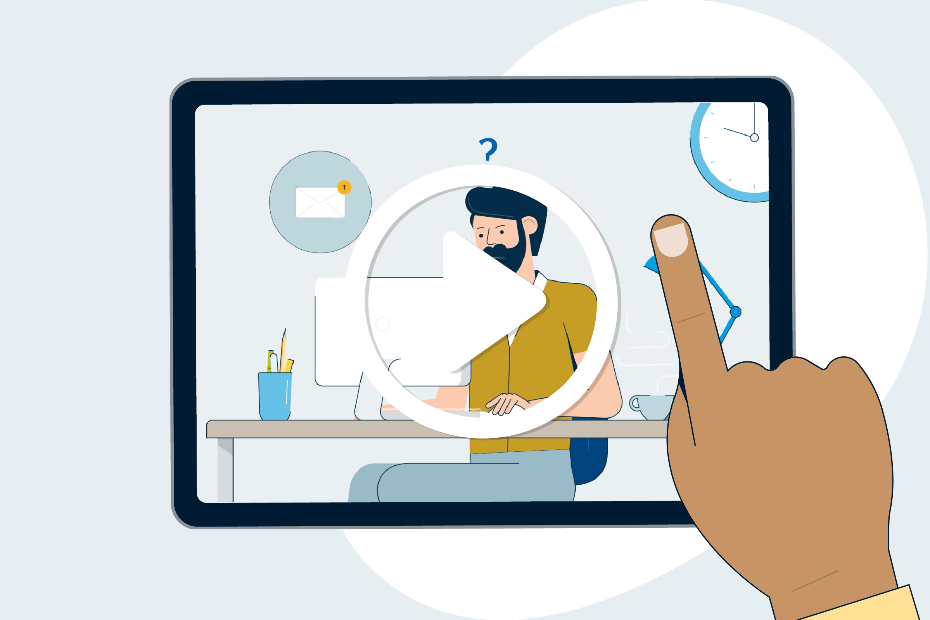From short-term relief to longer-term options, here are some of the steps you can take to ease the financial strain you may be experiencing.
Explore options available through your bank
When you’re facing financial challenges, one of the best places to turn is your financial institution, as they will have the scale and resources to offer a wide range of banking, lending and mortgage solutions.
Four ways your bank can help:
1. By adjusting your mortgage
If you’re a homeowner, you can use your home to give yourself some financial relief. By extending the amortization on your mortgage, for instance, you can stretch your regular payments over a longer period of time. As a result, you’ll reduce the amount of each payment and free up monthly cash flow to cover other essentials.
Another option is to refinance your mortgage. You can speak with your bank about consolidating outstanding debt into your mortgage at a lower interest rate and/or pull money out of your home to have a reserve of funds available to cover ongoing costs or any larger expenses.
2. By extending a line of credit
If you’re going through a short-term cash flow issue, a line of credit can be a very useful tool to cover interim costs. The benefit to your current situation is that you only pay interest on the credit you use, and once you make a payment on the line, that amount is available for you to use again.
Because interest rates are typically much less than credit card interest, a line of credit is also a great way to consolidate higher-interest rate debt.
You can also leverage the equity in your home to secure an even lower rate. A Home Equity Line of Credit or loan allows you to borrow against the equity in your home — generally up to 80 per cent of its appraised value.
3. By consolidating your debt with a loan
With a fixed rate loan, you can combine multiple debts into one easy payment and pay off the loan by a set date. It can be a smart way to improve your cash flow, reduce interest costs and simplify your finances.
4. By looking at your complete financial picture
Are you contributing to an automatic savings or investment plan? Did you sign on to make accelerated mortgage payments when you first secured your mortgage? Your bank can look at where your money is currently going and help you pause non-essential payments so that you have more disposable cash each month.
Understand New Government Relief Programs
While the Canada Emergency Response Benefit (CERB) has closed, the Government of Canada continues to offer relief programs for Canadians who remain financially affected by COVID-19. Here is what’s available:
Employment Insurance (EI)
EI benefits provide a minimum taxable benefit of $500 per week (or $300 per week for extended parental benefits). You may be eligible for EI if you accumulated at least 120 insured hours in the last 52 weeks, stopped working through no fault of your own and are ready, willing and able to work each day.
If you are not eligible for EI, you may be eligible for the proposed new benefits:
Canada Recovery Benefit (CRB)
The CRB provides $500 per week for up to 26 weeks to workers who have stopped working or had their income reduced by at least 50 per cent due to COVID-19, and who are not eligible for EI. Applications open October 12, 2020.
Get ready to apply for the CRB >
Canada Recovery Sickness Benefit (CSRB)
The CRSB provides $500 per week for up to two weeks for workers who are unable to work for at least 50 per cent of the week because they contracted COVID-19, are self-isolated for reasons related to COVID-19, or have conditions that would make them more susceptible to COVID-19.
Canada Recovery Caregiving Benefit
The CRCB provides $500 per week for up to 26 weeks per household for workers who are unable to work for at least 50 per cent of the week because they must care for a child (under 12) or family member due to the closure of schools or care facilities — or because that individual is sick, required to quarantine, or at a high health risk due to COVID-19.
For the latest information about Canada’s COVID-19 Economic Response Plan, visit the Government of Canada website.
Evaluate Your Budget
If you’re ultimately in a position where you need to get by with less, now is the time to take a close look at your budget to see where you can trim your expenses in order to meet your financial obligations. As part of this exercise, you’ll want to:
- Identify money coming in and money going out. Understanding where all your money is going is a critical step, so be sure to leave nothing out
- Prioritize your expenses. Classify what you need to spend money on (rent/ mortgage, groceries, insurance) and what is non-essential (take-out, books, apps and music)
- Find spending areas that can be trimmed, paused or eliminated
There are some really helpful tools online, including the Easy Budgeting Tool, which can help give you a clear picture of your cash flow. Input your income and expenses to see where you net out at the end of each month.
Many Canadians are facing financial insecurities right now, and the uncertainty of the future can create a great deal of stress and anxiety. If you’re feeling overwhelmed by your financial situation – or you simply want to check in with someone to make sure you’ll be OK – reach out to an RBC Advisor who can help put together a plan that offers some light at the end of the tunnel.
This article is intended as general information only and is not to be relied upon as constituting legal, financial or other professional advice. A professional advisor should be consulted regarding your specific situation. Information presented is believed to be factual and up-to-date but we do not guarantee its accuracy and it should not be regarded as a complete analysis of the subjects discussed. All expressions of opinion reflect the judgment of the authors as of the date of publication and are subject to change. No endorsement of any third parties or their advice, opinions, information, products or services is expressly given or implied by Royal Bank of Canada or any of its affiliates.



















